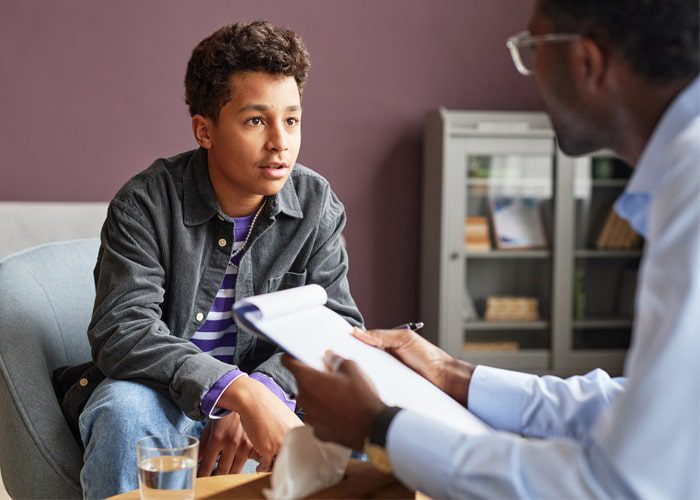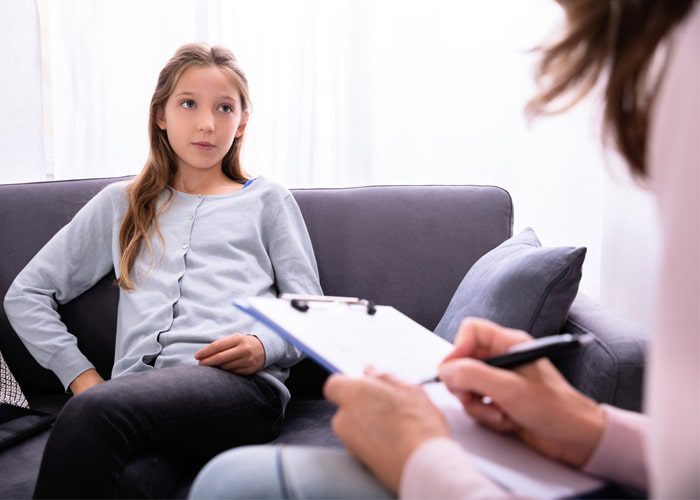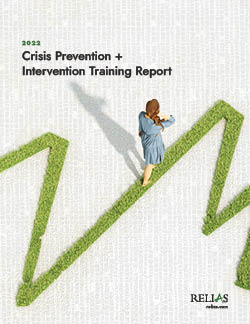Life is full of stress, even for kids. While we often associate childhood with happiness, many children experience trauma. Whether this comes in the form of bullying, abuse, loss of loved ones, childhood trauma negatively affects children’s mental health and creates lifelong mental and physical health conditions. Cognitive behavioral therapy (CBT) is one method that can help kids and teens in your community in need of mental health care get the attention they deserve.
As some therapists are reluctant to use CBT because it can be seen as manualized (following predetermined guidelines) and boring, we’ll guide you through what you need to know to get buy-in from your staff, including: what CBT is, why it’s so important when working with younger clients, and how to begin using at your organization.
What is cognitive behavioral therapy (CBT)?
CBT is a type of therapy that helps your clients understand the relationship between situations and their thoughts, feelings, and behaviors. It is used to treat a wide range of issues including health-related distress, family and school problems, and numerous psychiatric disorders.
CBT is generally short-term and goal-oriented, focusing on helping clients deal with specific problems. With this therapy, your clients learn how to identify and change maladaptive patterns related to their thoughts, emotions, and behaviors.
A basic premise of CBT is that our thoughts, feelings, and behaviors are all linked and influence each other. CBT teaches clients to recognize the influence that their perception of events and experiences has on their mood and feelings.
Concurrently, CBT-based interventions emphasize the importance of identifying activities that lead to neutral or positive feelings. Many times, clients will begin to recognize that when they engage in certain activities (e.g., exercising or talking to friends), negative feelings decrease. Through this process, the client will begin to feel more in control of how they respond to situations that have historically led to intense and negative feelings.
The goal of CBT is to teach clients that while they may have minimal control over certain outcomes or the things that happen in their lives, they can control how they interpret and deal with situations that occur.
Key aspects of CBT
Whether you’re practicing CBT for kids or adults, the principles remain the same. When offering CBT to your clients, keep the following best practices in mind:
- Create a collaborative partnership between clients and therapists to identify, understand, and overcome the client’s challenges.
- Build structured and problem-focused treatment by identifying specific goals and monitoring outcomes.
- Empower clients to use the skills taught after they complete their treatment.
- Use a “here and now” approach to target distressing symptoms rather than root causes or past problems.
- Use of a questioning style referred to as guided discovery to identify each client’s viewpoint and beliefs.
- Use behavioral experiments to test the accuracy of alternative beliefs.
- Use homework to set tasks for the client for continual practice between sessions.
The benefits of CBT for kids and teenagers
For kids and teens struggling with their mental health, CBT offers many benefits. Anxiety is one of the most common reasons for youth to attend therapy. Studies have shown that kids between seven and 15 years old see great results in terms of anxiety reduction with CBT. One marker of this is school attendance. Research had demonstrated that over 75% of kids who use CBT saw an improvement in school attendance rates.
But CBT for kids has benefits beyond anxiety disorders. Researchers have also found that:
- CBT has a positive impact on selective mutism, symptoms of post-traumatic stress, and those who have experienced abuse.
- CBT can help children, especially teenagers, improve sociability.
- CBT has helped improve sleep patterns and decrease the frequency of migraines.
While this is an impressive list, it represents only a fraction of CBT benefits that researchers have discovered over the last several decades.
How can you, as a behavioral health organization, help bring these benefits to your community?
CBT for kids and teenagers with anxiety

Due to its many benefits, CBT is considered the gold standard, first-line treatment for moderate anxiety disorders in children and adolescents.
As noted above, anxiety disorders are the most common psychiatric conditions among youth, affecting between 15-20% of children and adolescents. Without treatment, these conditions can persist into adulthood and are associated with the development of other mental health conditions, like depression, and with considerable functional impairment.
CBT for anxiety disorders in kids and adolescents involves directly addressing the anxiety-provoking thoughts that occur and the behaviors that result from those thoughts, like refusing to go to school or to sleep alone. The therapist works with both the parents and the client, using a variety of techniques including helping their client to get distance from anxious thoughts and graded exposure to feared stimuli.
Unfortunately, CBT can be difficult to access. Noncompletion rates can be high, and a fairly large number of children (up to 40%) with anxiety disorders do not fully respond to cognitive behavioral therapy. Other strategies, such as adding antidepressant medications, may be necessary when the response to cognitive behavioral therapy is inadequate.
How your organization can provide CBT for kids

In order for your organization to begin providing CBT to kids in your community, you must train your staff on the principals of CBT and how to apply this therapeutic technique to youth and children. While a therapist may feel competent in treating adults using CBT, they may struggle when trying to apply the same approach to kids. Determine which staff members desire or require this extra development and assign continuing education that can help them build their competence in treating children with CBT.
If, however, becoming a CBT therapy provider for children does not align with your mission or budget, you can partner with other organizations in your area to realize this goal. Reach out to schools, youth groups, child and family providers, and others with this skill set to expand your referral capabilities.

Crisis Prevention and Intervention Training Report
The 2022 Crisis Prevention and Intervention Training Report — the first of its kind by Relias — was conducted to gain insight into the current state of training for crisis prevention and intervention among behavioral health and intellectual and developmental disability (IDD) professionals.
Download Report →





